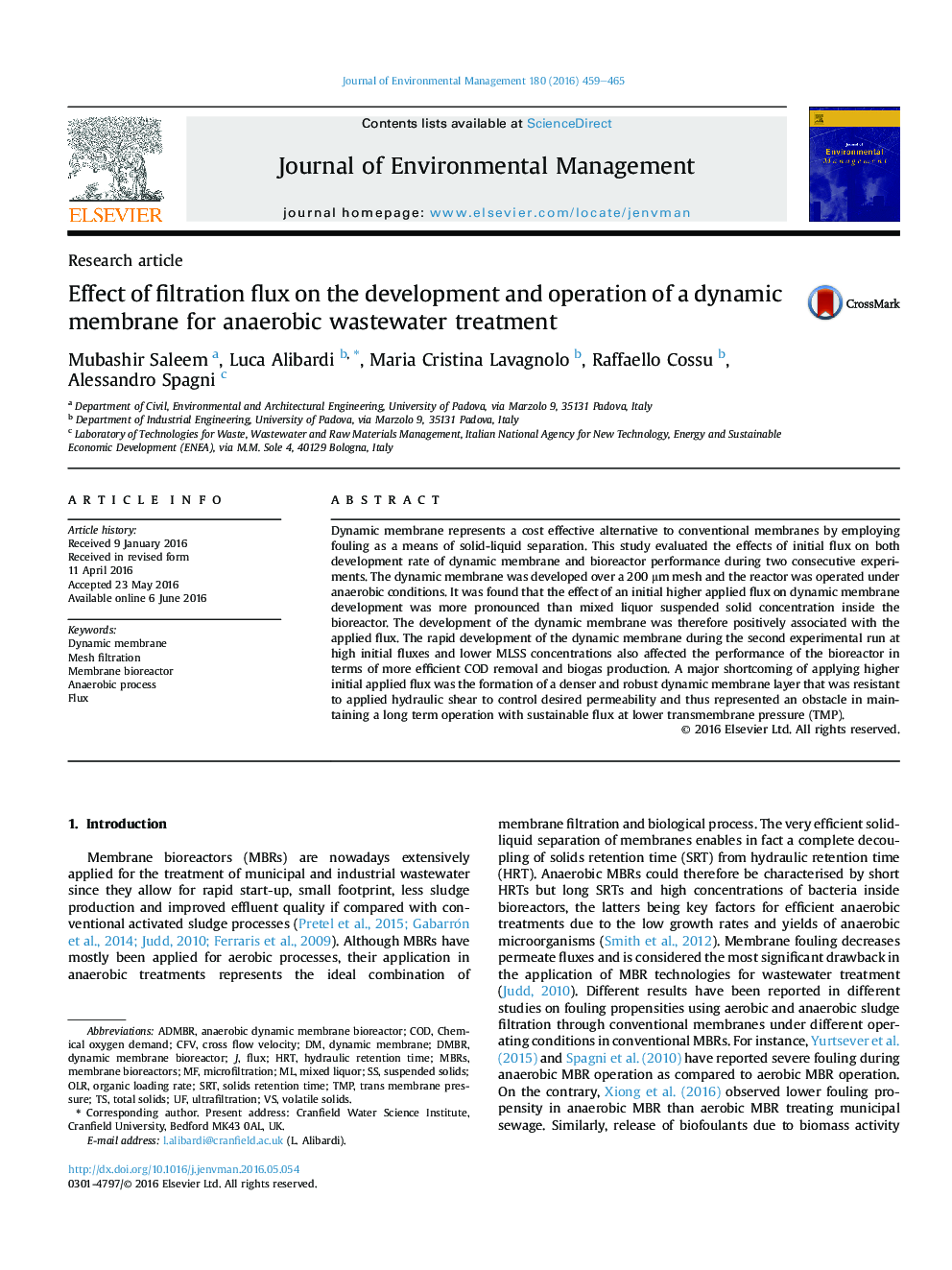| Article ID | Journal | Published Year | Pages | File Type |
|---|---|---|---|---|
| 7480194 | Journal of Environmental Management | 2016 | 7 Pages |
Abstract
Dynamic membrane represents a cost effective alternative to conventional membranes by employing fouling as a means of solid-liquid separation. This study evaluated the effects of initial flux on both development rate of dynamic membrane and bioreactor performance during two consecutive experiments. The dynamic membrane was developed over a 200 μm mesh and the reactor was operated under anaerobic conditions. It was found that the effect of an initial higher applied flux on dynamic membrane development was more pronounced than mixed liquor suspended solid concentration inside the bioreactor. The development of the dynamic membrane was therefore positively associated with the applied flux. The rapid development of the dynamic membrane during the second experimental run at high initial fluxes and lower MLSS concentrations also affected the performance of the bioreactor in terms of more efficient COD removal and biogas production. A major shortcoming of applying higher initial applied flux was the formation of a denser and robust dynamic membrane layer that was resistant to applied hydraulic shear to control desired permeability and thus represented an obstacle in maintaining a long term operation with sustainable flux at lower transmembrane pressure (TMP).
Keywords
TMPcross flow velocityMBRsCFVsRTOLRHRTUltrafiltrationMembrane bioreactorAnaerobic dynamic membrane bioreactorDynamic membrane bioreactorMembrane bioreactorschemical oxygen demandTotal solidsvolatile solidsSuspended solidsSolids retention timehydraulic retention timeFluxDynamic membraneAnaerobic processTrans membrane pressureMesh filtrationMixed liquorMicrofiltrationOrganic loading rateCod
Related Topics
Physical Sciences and Engineering
Energy
Renewable Energy, Sustainability and the Environment
Authors
Mubashir Saleem, Luca Alibardi, Maria Cristina Lavagnolo, Raffaello Cossu, Alessandro Spagni,
